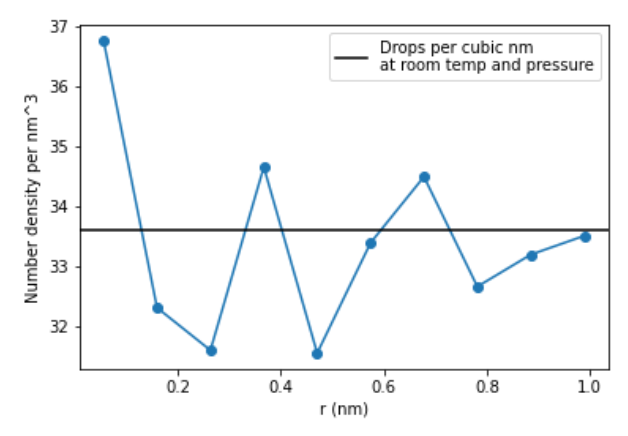I am simulating a droplet of water with GROMACS. The droplet consists of about 200 TIP3P water molecules and is placed near the center of a large, mostly empty box (so that it behaves like a free droplet in a vacuum, in spite of periodic boundary conditions. I had to do this as GROMACS2021 does not allow a simulation without PBC).
Now, I have to calculate the radial distribution function of the oxygen atoms and hydrogen atoms from the center of mass of the whole unit cell. However, I am not sure how to do this with gmx rdf. The documentation on the RDF module is minimal, and not clear at all.
I tried to run this:
gmx rdf -f md.xtc -s md.tpr -n index.ndx -o com-O.xvg -ref "com of group 0" -sel 3
In the index.ndx file, group 0 is System, group 3 is O atoms. However, this gave a graph that looks like this:
The graph is very squiggly, and I expected a smoother graph.
I have also tried to use -ref 0 -selrpos dyn_mol_com but that gives a graph even more uneven.
So my question is what commands should I use with gmx rdf to get the rdf, and whether my graph looks ok or not?
Note: I have already gone through these two pages: gmx rdf and selection syntax and usage, but I cannot understand what they mean. Please don't redirect me to those pages!


-bin 0.15to yourgmx rdf$\endgroup$